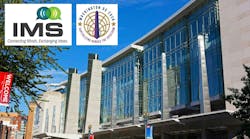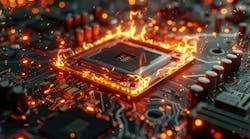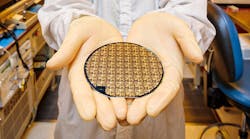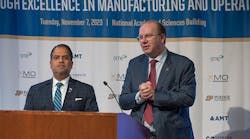Create Complex Waveforms Using Fast Digital Circuits (.PDF Download)
High-frequency signal waveforms flow through everything from communications systems to sophisticated test systems. They are often generated by analog sources, such as different types of oscillators. In recent years, however, as digital components such as digital-to-analog converters (DACSs) have improved in speed and performance, many signal waveforms can now be created starting with digital code and hardware. Signal generators based on digital architectures may be known as arbitrary waveform generators (AWGs), but they are often called direct digital synthesizers (DDS). They may not be able to match all the performance levels of a good phase-locked analog frequency synthesizer, but they have some benefits in terms of the precision and frequency switching speeds of the waveforms they can generate.
In contrast to an indirect analog frequency synthesizer which may use a PLL to lock a tunable frequency source such as a voltage-controlled oscillator (VCO) or a yttrium-indium-garnet (YIG) oscillator to the phase of a reference oscillator, a DDS generates an RF/microwave waveform directly from a high-speed DAC, using digital techniques. It stores the points of a signal waveform in digital form and then recalls a number of the stored points to generate a waveform, with the number of digital bits determining the amplitude resolution of the waveform.








